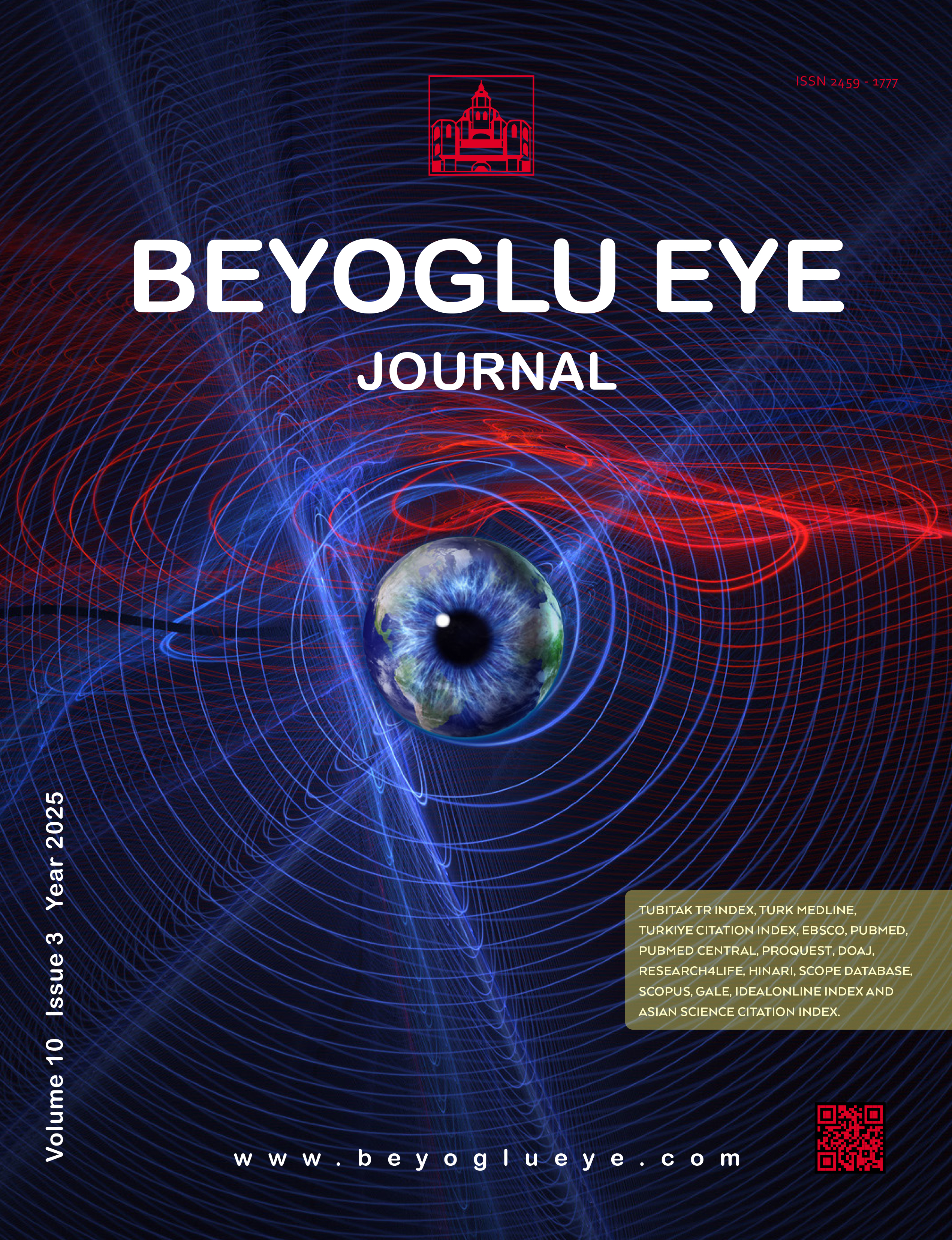
Pediatric Open-Globe Injuries: Clinical Characteristics and Outcomes of Repair in a Tertiary Center in Istanbul, Turkey
Aslı Kırmacı Kabakci1, Burcu Kemer Atik2, Elif Hazal Livan1, Serap Yurttaser Ocak1, Mustafa Nuri Elcioglu11Department of Ophthalmology, University of Health Sciences, Prof. Dr. Cemil Tascioglu State Hospital, Istanbul, Türkiye2Department of Ophthalmology, University of Health Sciences Beyoglu Eye Training and Research Hospital, Istanbul, Türkiye
OBJECTIVES: To evaluate the epidemiology, etiology, and outcomes of pediatric open-glob injury patients treated at a tertiary medical center in Istanbul, Türkiye.
METHODS: The records of 56 pediatric patients who underwent primary open-globe injury repair at our clinic between 2016 and 2021 were retrospectively reviewed. Data about demographics, date-setting of the injury, type of the traumatizing object, injury size, and zone were collected. The initial and final best-corrected visual acuities (VAs), associated features, trauma-hospital admission, and hospital admission-surgery durations were also recorded. The Pediatric Penetrating Ocular Trauma Score (POTS) was calculated to evaluate its effect on the final VA.
RESULTS: Fifty-six eyes of 56 patients with a median age of 8 years who were followed up for at least 6 months were included. The majority of the injuries took place at home (62.5%), while the most common traumatizing object was a knife (10.7%). The mean size of injury was 4.73±2.92 mm; of which 60.7% (34) cases were in zone 1, 33.9% (19) cases in zone 2, and 5.4% (3) cases in zone 3 injury according to Ocular Trauma Classification group. The mean VA of 1.48 ± 1.21 logMAR at presentation was improved to 0.83±1.13 logMAR at the last visit (p<0.001). The POTS was significantly correlated with the final VA (p=0.001; r=−0.473). Iris prolapse was observed in 31 patients (55.4%), whereas the lens was injured in 26 (46.4%) cases and displayed a significant influence on the post-operative visual outcome (p=0.019). The mean duration between trauma-hospital admission was 18.9±43.8 h; while hospital admission-surgery was 8.6±3.7 h.
DISCUSSION AND CONCLUSION: Our study demonstrated that the VA at presentation and the presence of lens injury are visual prognostic factors for pediatric open-globe injuries.
Keywords: Open globe injury, ophthalmic surgical emergency, pediatric trauma, primary repair, visual prognosis.
Manuscript Language: English









